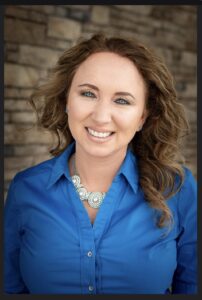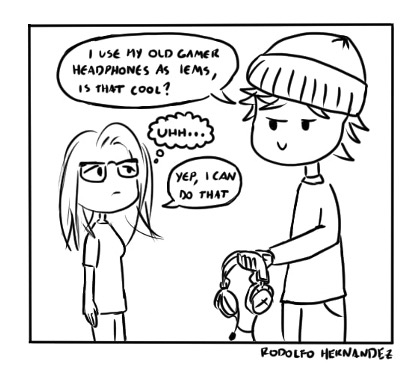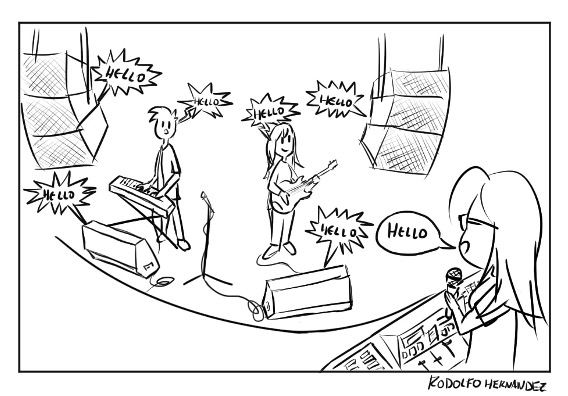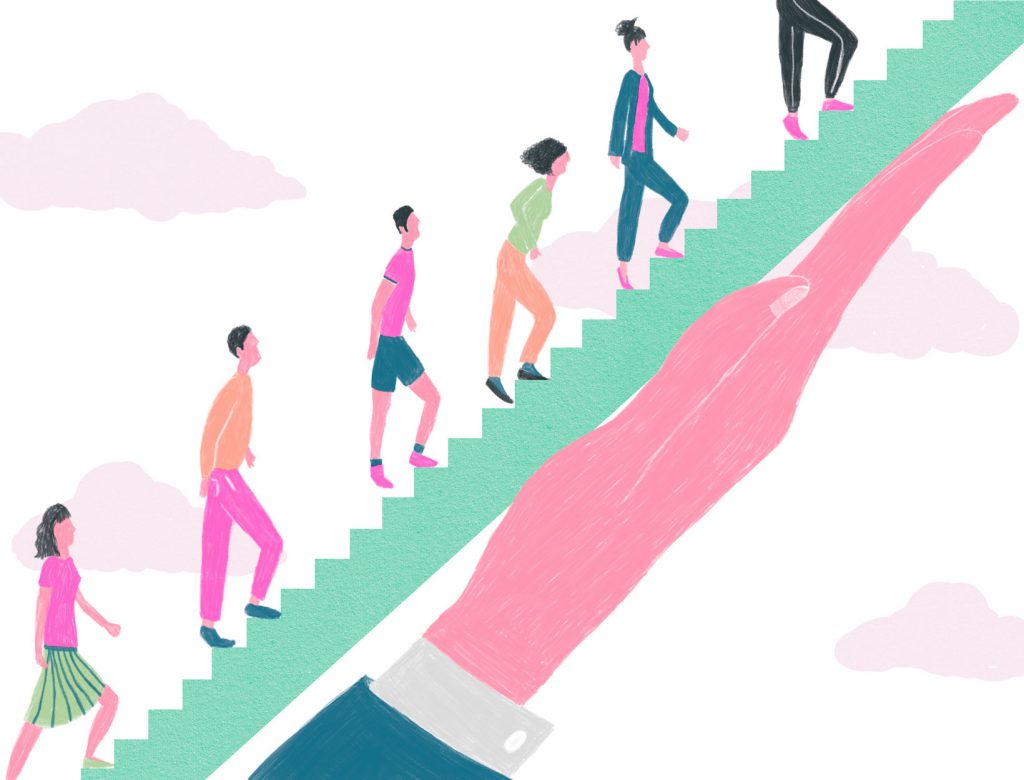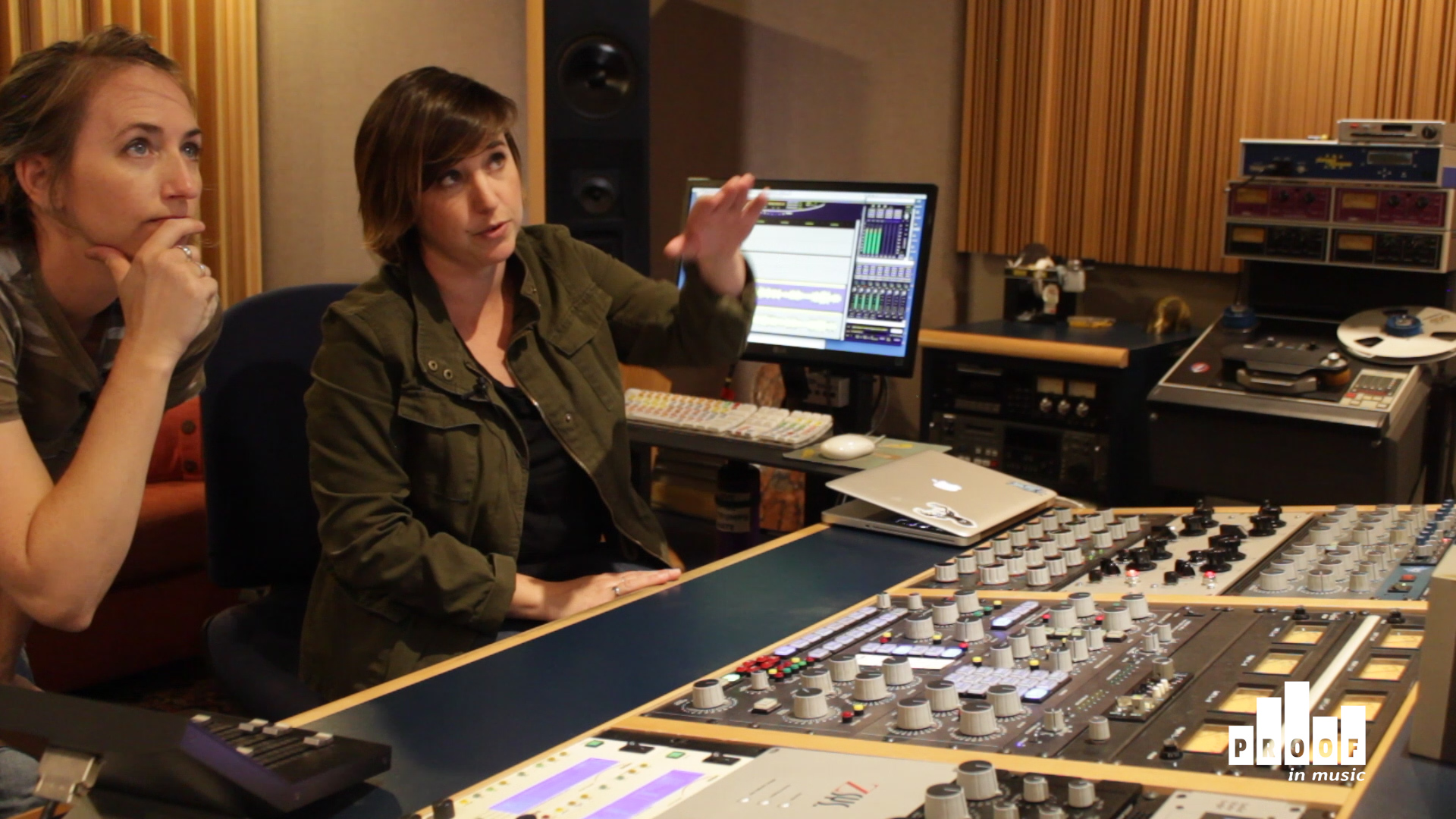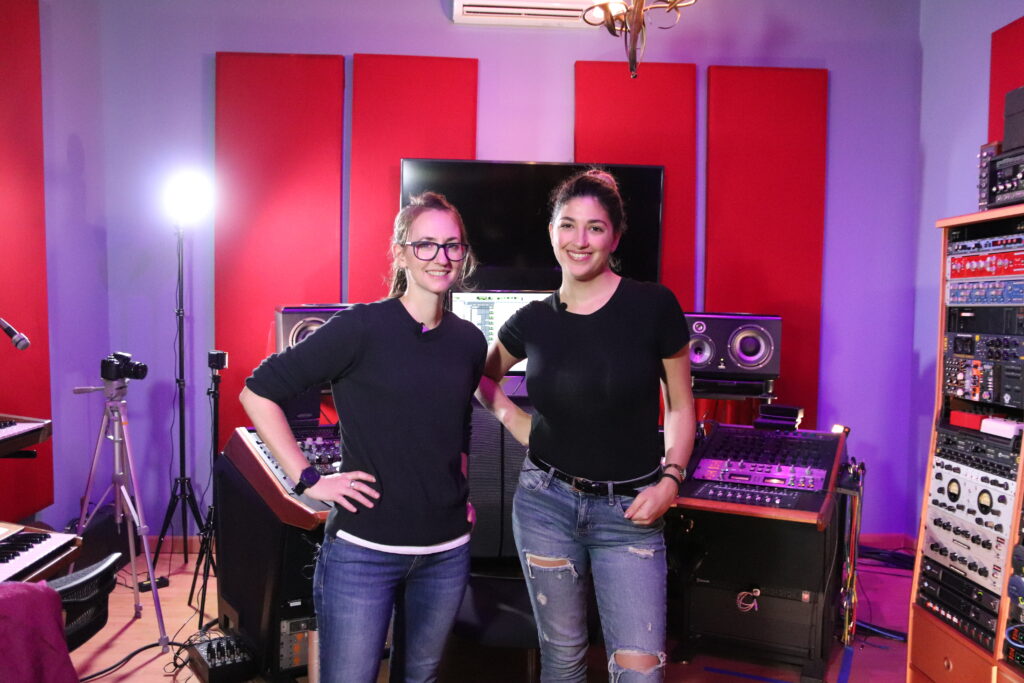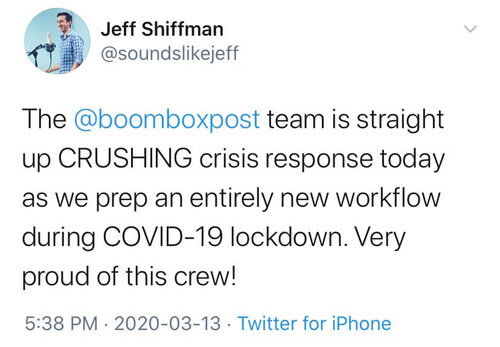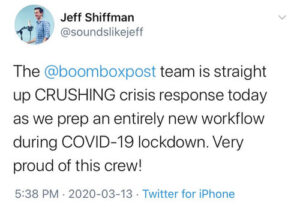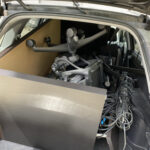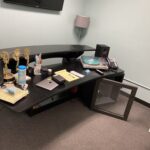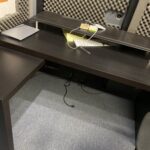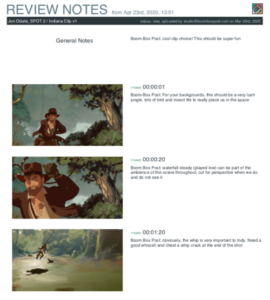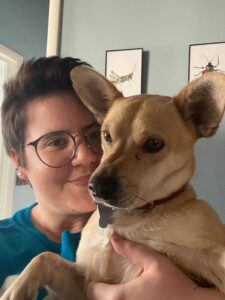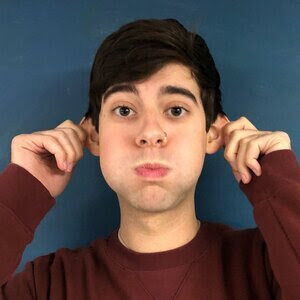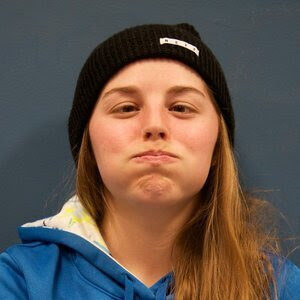Mentoring the Next Generation of Women in Audio.
How it Works:
SoundGirls Members are invited to sign-up for online mentoring and will be grouped with six to eight SoundGirls for two online sessions with a mentor. Mentors volunteering their time are professionals working in audio in a wider range of fields from Recording Arts, Live Sound, Post-Production Audio, Audio Manufacturing, and more.
Mentees will be grouped on a first-come basis. This is an on-going program and most mentors are willing to provide a few sessions throughout 2021.
If you would like to volunteer to be a mentor please email us at soundgirls@soundgirls.org
Mentees should prepare for their mentoring sessions by answering these questions.
- Is there a situation you are currently facing (or have in the past) in your internship, job, school, etc that you would like advice on?
- What challenges do you face that you feel are impacting your professional development? Perhaps your mentor may have advice.
List of Mentors
Recording/Studio/Mastering Mentors
Kerry Pompeo is a NYC based recording engineer and music producer, who describes her role in the studio as “being the liaison between artist and machine.” Since 2004, Kerry has been harnessing audio for studio, stage, and screen with a diverse array of artists & genres.
As chief engineer for Concord Music’s NYC studio, she provided recording, mixing, and writing sessions for label projects- including Elvis Costello, Jacob Collier, Michael Stipe, Esperanza Spaulding, Jazzmeia Horn, Teddy Sinclair, Injury Reserve, and Oynx Collective. She also works with independent artists who seek her out for her unique approach and creative studio techniques. Recently, Kerry stepped into the world of public art & systems design, creating an immersive sound experience with high-resolution playback in City Hall Park for “Out of Thin Air,” curated by More Art & The City of New York. An audio professional committed to honing her craft and pushing the industry forward, there are many exciting projects to listen out for coming from Kerry Pompeo. more info/music can be found on my site: www.kerrypompeo.com or linkedin: https://www.linkedin.com/in/kerrypompeo/
Audrey Martinovich: In 2012, Audrey started her professional recording career at Audio for the Arts, a Wisconsin-based recording studio specializing in acoustic music. She quickly became a trusted engineer for artists and companies in the Midwest and beyond. From recording live stand-up albums for Comedy Central to recording concerts on a stage floating in the middle of a lake for Reebok, Audrey has done a bit of everything. Intrigued by unusual acoustic environments, she especially loves recording musicians anywhere from silos to cavernous basements. Now, Audrey is part owner of Audio for the Arts and is one of the chief engineers.
In 2017, she became the first woman to contribute to Pro Tools Expert, with articles focusing on tips for recording live performances and acoustic instruments. In 2018, Audrey was a finalist to receive the award for Breakthrough Studio Engineer from Pro Sound Europe. She has given public talks and been on panels at Between the Waves Music Conferences, Empowering Women in Audio Clinics, and E Women’s Network. Audrey is a member of SoundGirls and AES and is a Warm Audio Artist
Mary Mazurek is a GRAMMY-nominated recording engineer. Her nomination was awarded by the Recording Academy in 2018 in the category of Best Engineered Album, Classical. She is also a broadcaster, and radio producer. Her work is regularly featured on WFMT Radio and WFMT.com. She is also a sought after educator and speaker who enjoys contributing in the classroom and on panels and committees within her industry and beyond. She serves as a role model and advocate for women in the recording industry, which presently is less than 5% of women. Additionally, she loves sharing her sonic insights across disciplines.
Virginia Haladyna is a musician, songwriter, performer, and freelance recording engineer based out of Austin, Texas. Upon graduating from The Recording Conservatory of Austin, she went on to intern and work out of the world-class Orb Recording Studios. She has recorded three full-length albums, EPs, and multiple singles for local Austin bands. As well as recording other artists, Virginia records and mixes her band Happy, Hollow. She’s assisted sessions alongside established musicians, producers, and engineers the last five years and plans to continue honing her craft for many more.
Piper Payne is a mastering engineer based out of Oakland, CA and Nashville, TN, where she works on albums for independent artists and major labels. In Spring of 2019 Piper joined the famed Infrasonic Mastering team, merging her successful studio, Neato Mastering, with the Nashville based company, owned by Pete Lyman.
Piper is a Trustee of the Recording Academy (GRAMMYs) and she serves on the P&E Wing Steering Committee and the Advisory Council. She is a Governor of the Audio Engineering Society and she is the Co-Founder and Co-Chair of the AES’s Diversity & Inclusion Committee as well as an active member of Women’s Audio Mission and she serves on the Board of SoundGirls.
In addition, Piper is the keeper of Vinyl Quality Control and a consultant for vinyl record pressing plants and is opening her own manufacturing plant in Nashville in Spring 2020. She is an audio professor and guest lectures often about mastering and recording.
Piper began her career with a BFA in Audio from The University of Michigan, continuing her graduate education in Audio at the University of Stavanger in Norway.
Piper has a diverse background in musical styles. As a drummer, she knows that the best outcome of every project is that it has to feel good. As an engineer, Piper is focused on technical quality and correctness. But, at the end of the day, mastering is about format conversion and quality control so the project gets just what it needs.
Piper has mastered a wide variety of music including nationally renowned artists Third Eye Blind, The Go-Go’s, Madame Gandhi, Geographer, The Steven Universe Soundtrack composers Aivi and Steven, Basement, Hundredth, Elettrodomestico (Jane Wiedlin/Go-Go’s), Blithe, ANIIML, Shamir, Betsy, Between You & Me, and Fritz Montana as well as many Bay Area greats. See her discography at infrasonicsound.com/piper
Angie Dickinson Mickle started her recording career in 1983 as an assistant engineer at Pierce Arrow Recorders in Evanston Illinois after studying Sound Engineering at Columbia College Chicago under legendary engineer Malcolm Chisholm. Angie worked as an announcer at several radio stations before starting Avocado Productions in 1986. The company was moved to a new studio in Colorado in 2002 where it continues today. Over the years, through Avocado Productions, Angie has offered audio services from Music Production and tracking, Audio Transfer and Restoration (specializing in Wire Recordings), Studio and Location recording, and more recently as a Stage Tech and Live FOH engineer for Naropa University, Colorado Chautauqua Auditorium. She has consulted for several churches and is a guest artist at The Denver School of the Arts. Angie is a member of the Association for Recorded Sound Collections and SoundGirls. She was named among the 10 Best Engineers in Denver by publication, Westword.
Anna Frick is a mastering engineer and the restoration center manager at Airshow Mastering in Boulder, Colorado. Her work encompasses studio albums, live recordings, reissues, and compilations across an array of formats, old and new, and a wide variety of genres and styles, from bluegrass and folk-influenced acts to rock and New Age projects. Legends like Ralph Stanley and Doc Watson, exciting contemporaries such as Billy Strings and GRAMMY-nominated Wood & Wire, and important blues and jazz archival recordings (such as the GRAMMY-winning Rise & Fall of Paramount Records Volumes 1 &2) have all benefited from her uncanny ear and deft touch. She balances her strong instincts and intuition with her technical experience and each client’s goals to finesse every project she tackles. Anna holds a degree in Music Industry Studies from the University of Colorado at Denver. She is a graduate of the International Bluegrass Music Association’s Leadership Bluegrass program, Vice Chair of the Colorado AES Chapter, board governor of the Recording Academy – San Francisco Chapter, and chapter head for Colorado’s branch of SoundGirls.org.
Vanessa Silberman is an international touring singer, guitarist, and songwriter from Brooklyn, NY (via Los Angeles, CA). She is also a record producer, engineer, an independent A&R and runs an artist development Label called A Diamond Heart Production. Widely known for having a very strong DIY ethic and wearing many different hats in the music business —Vanessa has worked for heavy hitters in the music business such as Producer / Songwriter Dr.Luke as well as for many companies and places ranging from the Foo Fighter’s Studio 606 to Epitaph Records.
Jenn D’Eugenio is the sales and marketing manager at Furnace Record Pressing and vinyl enthusiast for over 20 years. She is the founder and curator of ‘Women In Vinyl’; and is dedicated to the art and creation of vinyl.
Her background spans that of designing textiles for Fortune 500 fashion companies to career advising for one of the top art colleges in the country; however, Jenn’s passion for vinyl has lead her to a career in helping to manufacture the physical product for bands, and both major to independent record labels. In launching Women in Vinyl a site, online community, and future non-profit she hopes to empower women working in the vinyl industry and to help young women who may be interested in this career path achieve their goals.
Post-Production
Kelly Kramarik is a post-production audio mixer for Starz, a Lionsgate Company. In her free time, she also works as a recording engineer, production sound mixer, and podcast editor. Mentoring on post-production for film and television, I can also do production sound mixing and podcast editing.
Veronica Toledo is currently the Assistant Music & Sound Editor at Pixar Animation Studios. She formerly interned at both Fantasy Recording Studios and Women’s Audio Mission. She has been involved as a production sound assistant for projects including “Toy Story 4”, “Onward”, and “Soul”. Veronica holds a BA in Economics from Mills College and is the co-chair for the Bay Area Chapter of Soundgirls.
Theatre Sound Production
Becca Stoll is a theatrical audio engineer. She specializes in mixing musicals and is especially passionate about mixing new works. Current gig: Head of Audio on Rock of Ages (Off-Broadway at New World Stages). New York: Two’s A Crowd (59E59), A Strange Loop (Playwrights Horizons), Antigone in Ferguson (St. Ann’s Church); We Are The Tigers (Theatre 80). Tours: Million Dollar Quartet (A2). Selected Regional: The Donkey Show (OBERON), Caucasian Chalk Circle (A2, Yale Rep), 3 seasons as Production Audio Engineer for the Goodspeed Opera House. Education: Carnegie Mellon School of Drama, NHSI “Theatre Cherubs”. Member: TSDCA, USITT, SoundGirls.
Heather Augustine is an audio engineer currently touring around the US with Broadway-style shows. She graduated from Penn State University with a BFA in Theatrical Design and Technology, with an emphasis on Sound Design, and has been on the road for the past 8 years. During her touring career she worked on a variety of shows including Billy Elliot, Dirty Dancing, Phantom of the Opera, Les Misérables, and Miss Saigon. Currently she is the A1 for the first national tour of Mean Girls.
Elisabeth Weidner is a freelance Sound Designer/Composer and Audio/Video Technician based on the Central Coast of California. She holds a degree in Commercial Music from Florida State University and has been working professionally in the live sound industry for over 15 years.
Prior to being a full time freelancer, she served as Sound Director/Resident Sound Designer/Composer for PCPA-Pacific Conservatory Theatre from 2009-2019. While in residency, she also served as Faculty for PCPA’s Technical Theatre Conservatory. Elisabeth sits on the USITT Sound Commission jury for Current Practices and Research in Sound paper/article submissions and is a proud member of ASCAP and the TSDCA. www.elisabethanneweidner.com
Read Elisabeth’s Blog
Live Sound
Samantha Potter is an audio engineer and an editorial director for ProSoundWeb, Live Sound Magazine, and Church Sound. A self-described renaissance woman, Samantha studies a broad range of audio topics to stay informed and well versatile. With eight years of experience in pro audio, Samantha has held a multitude of jobs but is currently pursuing education expansion and journalistic accuracy in the field. Her favorite position is at front of house, but she doesn’t shy away from monitor world or even producing.
Read Samantha’s Blog
Lisa Affenzeller is an independent FOH sound engineer with over ten years of experience in the live music industry, based in Hamburg; Germany, and touring all around the globe. She is a seasoned production manager and is specialized in the hard rock & metal music genre. She is well versed with a variety of mixing consoles, digital plugins & analogue outboard, stage micing, and PA setups.
Maxime Brunet is a freelance FOH engineer & tour manager. She has toured intentionally with artists such as Wolf Parade & Operators, amongst others. She has also worked as both a monitor engineer & FOH engineer in venues both in Ottawa & Toronto.
What mentoring will cover: Maxime can mentor in French & English. She will mentor on live sound, how to use different consoles (would have to be over offline editor for now, but I can do Avid, Yamaha, Behringer..). Can mentor on being a tour manager (North America and Europe). Mixing FOH. Mixing monitors, putting a band on in-ears, and teaching an intro to live sound class & how to set up a workshop.
Read Maxx’s Blog
Daniela Seggewiss: Dani currently works as a freelance monitor engineer for the bands The Sweet and Opeth. Her year fills up quickly between the two groups. She fills in the gaps with festivals and local gigs in Leeds.
In the end, it all comes down to the ability to make it happen, which in my opinion is one of the main characteristics of the live sound / live concert industry. There is no second chance. We have the one chance to get it right so if something goes wrong we look around and use whatever we can find around us to make it happen!
Erica D’Angelo: Erica began her musical career as a professional clarinet player, graduating with a Bachelor of Music (Performance) from the University of South Australia. She spent the early years teaching and playing with the Adelaide Symphony Orchestra. After traveling to work in London during her 20s, she discovered she had a passion for electronic music and music production. Embarking upon a new career, she completed a Diploma of Audio Engineering at the SAE and gained valuable experience working in live music, studio recording, and film recording.
Returning to Australia in 1997 and based in Sydney, her career continued to grow in the field of live sound, particularly large scale event production. A pinnacle in her career was the position of Audio Director for the Team Welcoming Ceremonies, as part of the Sydney Olympic Games Organising Committee.
Erica moved to Melbourne in 2003 to pursue her own music production goals, working under the name of Mind’s Eye Entertainment. She continued working freelance in technical production, with events such as the Commonwealth Games Opening Ceremony, Adelaide International Arts Festival, the Deaf Olympic Games Opening Ceremony, AFL Grand Finals, Melbourne Fashion Week, and the Logies.
Joining Haileybury in 2011 to teach the Certificate III in Sound Production, she continues to utilise her skills and experience in large scale events by being part of the production team that delivers the Tattoo, musical, and multiple concerts over the academic year.
Barbara Adams is an audio engineer and educator with twenty-five years of experience in the music industry. She specializes in live sound and production management. Her strong and varied experience also includes recording engineer, stage management, and artist management.
Barbara is Lecturer Professor at Rowan University teaching Sound Reinforcement and Audio Recording in their Music Industry Program. She also is the booking manager for Rowan Music Group, the program’s record label, and artist management services. By night she is busy engineer and production manager at The Locks at Sona, Philadelphia’s premier listening room. She occasionally works as a freelance Engineer/System Tech for several production companies and does freelance work mixing FOH for regional bands touring the Northeast and Mid-Atlantic regions of the United States.
As the Soundgirls Philadelphia chapter president, she is always looking for ways to help mentor and guide new engineers in the field of live sound and bring together the Philadelphia community of SoundGirls. And as if this wasn’t enough, she is the mom to a very busy pre-teen son who enjoys helping mom at gigs if he isn’t playing hockey, playing music, or in school.
Grace Royse is a 17-year concert audio engineer and veteran of the touring music industry with a concentration in production management. Her experiences span thousands of festivals, tours, and live broadcasted performances worldwide, including the US Open, Good Morning America, Ellen, LA & NYC Pride, and the Super bowl. “I’ve been on both sides of the event experience; touring with headlining A-level artists globally, as well as hosting artists as the on-site Production Lead at world-renowned festivals. Understanding the needs of both gives me an exceptional operational vantage point.” Grace credits her network of top-performing colleagues, along with a strong sense of purpose, for making every successful event possible.
Michelle Sabochick Pettinato: Michelle’s mixing experience includes everything from the tiniest clubs to the world’s largest stadiums, TV shows from the Grammy’s to Billboard Music Awards, from SNL to Jimmy Kimmel and others, as well as National and International festivals including Coachella, SXSW, Japan’s Summersonic, The UK’s Download, Germany’s Wacken.
Along with appearing as a panelist for industry events including the Pro Production and AES conferences, Michelle has been a guest lecturer and speaker at Full Sail and Capital University. She was inducted into the Full Sail Hall of Fame in 2015 and appeared as the Keynote Speaker for Capital University’s Creative Arts Weekend in 2018.
Michelle is the Creator/Owner of MixingMusicLive.com an online course for live sound and mixing. She is offering mentoring in Live Sound and Mixing, Life on tour including touring etiquette, how to prepare for your first tour, how to balance work/life and the business of being an independent/freelance engineer, career development, and anything related to making a living as a touring sound engineer. If you are considering a career in this industry there are some specific questions you need to ask yourself and you need to make sure you have realistic expectations.
Karrie Keyes – Monitor Engineer for Pearl Jam and Eddie Vedder for 30 years. Instrumental in building Rat Sound Systems from a system in a van to an international touring company (20 years). Working in Live Sound since 1986. Co-Founder and Executive Director of SoundGirls
Christina Moon has been working in audio for over twenty years. Primarily known as a touring monitor engineer but has had her hands in a little bit of everything in order to get my foot in the door. Some artists I’ve worked for include Sleater Kinney, Beach House, LCD Soundsystem, Yeah Yeah Yeah’s, Death Cab For Cutie and Interpol.
Luana Moreno has been a Sound Engineer for over 10 years. She has worked with all aspects of audio, from recording independent bands to major events. She is most experienced in Live Sound, but also did quite a lot of Recording, Mixing, Mastering and Sound for Film. Originally from Brazil, she is a founding member of the collective of Women in Audio from Brazil (https://www.facebook.com/MulheresDoAudio/). Luana moved to Australia to pursue higher education in 2017 and started a SoundGirls chapter in Melbourne. Now based in Adelaide, she’s recently been part of Adelaide Fringe and works at the Adelaide Convention Center, as well as at her own home studio.
Gabi Lima is an audio engineer, producer, songwriter, musician, singer, and candy eater. She is based in São Paulo, Brasil
What mentoring will cover: how to be a good assistant and get called back for more sessions, signal flow, signal flow, signal flow, intro to live sound
Mary Broadbent is a Tour Manager, Production Manager, and Guitar-Backline Tech who’s been in the music touring industry for 16+ years. She’s tour managed for artists such as The Mowglis, The Staves, Loote, Wrabel, Plain White T’s, and production managed/stage-managed the festival Girlschool and She Rocks Awards 2018 & 2020. In 2015 she added Guitar-Backline teching to her skillset working for Big Bad Voodoo Daddy, The Mowglis, The Staves, Plain White T’s, and Tegan and Sara. She serves as a TM/PM mainly but pulls double duty Tour Managing & Teching when tours require it. She finished off 2019 Tour Managing for Clairo on her Immunity Tour in the US & Europe and started off 2020 Guitar Teching for Against Me! when the industry was put on pause by Covid-19. She lives in Los Angeles and is using this ‘ pause ‘ in the touring world to take a Mixing Live Sound Course and advancing her on-going guitar lessons.
Beckie Campbell: Beckie is the successful owner of B4Media Production LLC. As a business owner of a growing production company, she manages crews, trains employees, and books festivals all over the United States. She freelances as an A1 for several corporate organizations such as the City of Orlando and PennellChing Development. As a PM, Monitor, and FOH Engineer her expertise is in audio, but she has also taught at Audio Visual Technologies/Sports Broadcasting, and several other courses around Florida for various companies and schools. As an accomplished Production Manager, FOH, and Monitor engineer she has helped train and grow crews for several theaters, live events, and houses of worship. All while touring as a FOH Engineer for major acts.
Beckie is passionate about live events and making sure the next generation learns the proper way to make an event excellent. In her leisure time she can be found cooking, relaxing at the beach with an ice-cold beverage, watching a live performance, or kayaking. She loves to hang with her nieces and nephews and teach them fun crafts, the difference between stage left and stage right, and how to make goofy faces.
Gil Eva Craig is an independent Audio Engineer and Music Producer working in professional audio for the last 18 years. Gil got her start as a recording engineer in 1996 and still owns and operates her own mixing and production studio.
Claudia Englehart – Claudia has been a professional live-sound engineer for 38 years. In 1982 she began her career working in the historic San Francisco jazz club Keystone Korner. In 1983 she moved to New York City and continued mixing live sound in clubs such as CBGB’s, The Bitter End, and S.O.B.’s, and then in 1985 began touring full time as a front of house engineer. Since 1989 Claudia has been working full time as sound engineer and tour manager for guitarist Bill Frisell.
She has recorded two live albums for Frisell, “East/West” and “Bill Frisell Live”. She has also mixed and recorded just about all of his live concerts over the past 30 years, which has resulted in a “Live Download Series”, concert recordings available for download on Frisell’s website.
When not on tour with Frisell, Claudia has toured extensively with many other renowned artists including Wayne Shorter, Herbie Hancock, Laurie Anderson, Lou Reed, Ron Carter, Michael Brecker, Grover Washington Jr., Dave Holland, John Scofield, Charles Lloyd, Lee Konitz, Marianne Faithfull, Rosanne Cash, Ryuichi Sakamoto, David Sylvian, Medeski Martin & Wood, John Zorn, The Kronos Quartet, Don Cherry, Cecil Taylor, Eddie Palmieri, Willie Colon, and many others.’
Tana Douglas: Throughout the music industry, Tana Douglas is acknowledged as rock’n’roll’s first female roadie. Her journey started in 1973 in Australia within a year she was working for AC/DC, first doing backline then F.O.H. Sound for the band. She then moved to lighting working for a Major Australian Promoter and completed in quick succession several tours with International acts such as: Santana, Suzi Quatro, Neil Diamond, David Essex, and Leo Sayer and Status Quo all before she turned 18. After getting her Father to sign her passport so she could travel Internationally she ventured to London to start 3 years with Status Quo running their lighting rig. She then brought that rig to TASCO a major Production company in London that until that time had only supplied Sound for tours. A relationship developed there that would last several years and include working for such artists as Status Quo, The WHO, Ozzy Osbourne, Whitesnake, The Police, Elton John, Iggy Pop, and Johnny Halliday the French megastar.
Her relationship continued with TASCO enabling her to transfer to USA after they opened a Los Angeles division. After becoming a resident of the USA she broadened her working relationships to also include both Delicate Productions and Light & Sound Designs. The tours that followed were Elton John, INXS, Men at Work, before being once again called back to Paris to manage the largest lighting rig ever built for a 7-month residency for her old friend Johnny Halliday, for Light & Sound Design (LSD).
After successfully completing that task it was time for a change. Los Angeles had offered Tana new passions and she gradually left lighting, stage/production to focus her skills on logistics which meant if a tour had to be somewhere, she was the person to make sure it happened – for everyone including Lenny Kravitz, Pearl Jam, Red Hot Chilli Peppers, Luther Vandross, Ice-T, and Ice Cube to name a few. Tana’s career spanned 30+ years and has seen her work alongside some of rock’s biggest names and personalities. As the music industry grew to become a worldwide cultural phenomenon, she was there, in the thick of it, a girl.
Tana and her unique position in the music industry have been included in several other people’s books – most recently a chapter in Stuart Coupe’s book, Roadies, which confirmed her as the first female roadie. But now it’s time for Tana to tell her story, in her own words. Her Memoir is being published through HarperCollins Australia and tells of the joys and struggles faced as a girl out on the road on her own in the wild and woolly days that created this industry of music. It is due to be released in April 2020.
Tana currently resides in Los Angeles, California. Due to COVID 19 Tana’s book, LOUD has been held back from release by her publisher with a tentative release
Lisa Fahrenberger: I would be interested in helping newbies of any age and supporting them. I’m happy to work with non-binary, trans- and cis women. Living in Auckland, New Zealand. With almost 20 years of experience, I’ve seen a lot and held a variety of positions. Currently, I trying to establish myself as a monitor engineer, as well as pushing for more large-scale RF coordination. I can mentor for live audio, general signal flow, fault finding, problem-solving, patch, many standard consoles, concerts, festivals, corporate, theater, warehouse roles – and radio frequency management.
Rebekah Lee McGee experienced in live sound reinforcement. I tech a D&B V rig here in Atlanta, I do repairs for multiple venues, rode around with a band for the past six years or so mixing. I also have lots of experience in the studio doing pre-pro, tracking, and post for music as well as film industries. I also have a handful of IMDb credits for my location audio work for film.
Lighting Design
Jenny Bass began her career as a lighting technician in Seattle after receiving her BA in Technical Theatre from Guildhall. She then started touring with PRG for artists such as Madonna, Scorpions, and Nicki Minaj. She then worked her way up to a programmer, lighting director, and Lighting Designer. The Artists that she designed, directed and programmed for include Lea Michele, Avalanches, Earth Wind and Fire, Mary Mack, Rae Sremmurd, and Tinashe, among others.
Before this she toured as a technician. She received her MBA and started working as a technical director for a startup. From there she worked as a production manager at the Music Center. Some of the companies she worked with as a production manager include Alvin Alley, Circa, and the Royal Opera House. Her most recent role was as a technical designer at PRG.
Tiffany Keys comes from an unconventional background of musical theater and dance to entertainment’s technical industry, Tiffany has developed a unique set of skills and views that she draws upon to give her a fresh outlook on lighting.
In 2014 Tiffany started Key Lighting, Inc., establishing herself as a lighting director and programming for television, film, live concerts, and corporate events. Navigating through an industry that is predominately men she is now leading her field as one of the most sought out programmers, lighting some of the world’s biggest stages. Please visit Key Lighting’s website to see the latest projects: www.KeyLightingInc.com
Lauren Sego is a lighting designer and programmer based in Los Angeles. During her years at California Institute of the Arts, she worked in film and television, programming, and operating for various shows with heavy involvement in E-Sports streams. After graduating in 2016, she began her career as a touring lighting designer and programmer and has worked with artists such as Janelle Monáe, Jidenna, Jennifer Hudson, Ingrid Michaelson, Tegan and Sara, and Mat Kearney.
Career Development
Sarah Martinico was born in St. Pete, Florida where she grew up as a multi-instrumentalist and songwriter. She went on to study at Berklee College of Music and graduated with a Bachelors in Music Production and Engineering. She started her professional career in Los Angeles in marketing at BMG where she founded and created the first-ever royalty-bearing stems for sale from a major publisher’s catalogue via Avid Pro Tools. She went on to work for Native Instruments developing sound packages and marketing content with clients. She then opened her own company in 2019 called SL Music & Marketing. She has worked for numerous Grammy-winning producers, songwriters, and artists from the pop, urban and Latin worlds in marketing, branding, music publishing, partnerships, management, and consulting.
Spanish Speaking Mentors
Ximena Montenegro
Mentoring area: Live Sound
Nationality: Chile
Sound technician and audio engineer, for more than 15 years he has been dedicated to sound reinforcement, either as a technical assistant for FOH, monitors of different companies. He has mixed for various artists such as: Marisela, Lucero, Erick barrios, Denise Rosenthal, among others, she has participated in festivals such as Viña del Mar.
Técnico de sonido e ingeniera de audio, por mas de 15 años se ha dedicado ado al refuerzo sonoro, ya sea como asistente técnico para sala, monitores de diferentes empresas. Ha mezclado para diversos artistas como : Marisela, Lucero, Erick barrios, Denise Rosenthal, entre otros ademas ha participado activamente en festivales como Viña del Mar.
Roberta Siviero
Mentoring area: Live Sound
Nationality : Brazilian
Roberta Sivero Brazilian, it’s been like 20 years that I work in live sound (I started in sound companies, nowadays I dedicate myself to mix more), but I also have experience in TV, theater and sound studio (including audiovisual post-production) because in Brazil we have to do a little bit of everything.
Robertta Severo brasileña, hace como que 20 años que trabajo en sonido en vivo (empecé en compañias de sonido, actualmente me dedico a mezclar mas), pero también tengo experiencia en TV, teatro y estudio de sonido (incluida la postproducción en audiovisuales) porque aquí tuvo que hacer un poco de todo.
En 2012, comenzamos un grupo de mujeres sonidistas en São Paulo (donde vivo hace casi 15 años), lo que ha hecho una gran diferencia y nos ayudó a estar más visibles en la industria.
Claudia Nader
Mentoring area: Sound pre-production.
Nationality : Mexican
Clau Nader
Mentoring area: Sound Postproduction, Sound Design, Location Sound, Psychoacoustics
Nationality : Mexican
Clau Nader is an audio engineer specialised in binaural and immersive sound design for film, TV, audio-visual media, advertising and sonic art installations. Her work in film has been featured in numerous festivals in Europe, the USA, and Latin America. Clau is currently working as a Graduate Teaching Assistant and Social Media Content Producer and is a current PhD researcher at the Department of Theatre, Film, Television and Interactive Media of the University of York, in the UK. Her research, funded by CONACyT and the AES Educational Foundation, explores sound formats found in ASMR-inducing media and their use as potential psychosocial interventions for mental health and wellbeing in adolescents.
Clau Nader es una ingeniera de audio especializada en diseño sonoro binaural e inmersivo para cine, TV, medios audio-visuales, publicidad e instalaciones de arte sonoro. Su trabajo en cine ha sido parte de numerosos festivales en Europa, EUA y Latinoamérica. Actualmente, Clau trabaja como Profesora Adjunta y Productora de Contenido para redes sociales y realiza una investigación doctoral en el Departamento de Teatro, Cine, Television y Medios Interactivos de la Universidad de York, en el Reino Unido. Sus investigación, patrocinada por CONACyT y la AES Educational Foundation, explora formatos de sonido en medios inductores de ASMR y su uso como posible intervención psicosocial para la salud mental y bienestar en adolescentes.
Cristina Abaroa
Mentoring Area: PRODUCER | MANAGER | ENTREPRENEURSINGER-SONGWRITER | ARRANGER | COMPOSER
Link for more information about Cristina : https://www.dropbox.com/sh/b4mf4zv7eiggb7f/AAA4wkAMWZfJ0MwZ15-c8raCa?dl=0
Nationality : Mexican
Born in Mexico Cristina Abaroa began her career in Los Angeles, California in ‘91 participating with the renowned producers Juan Carlos Calderón, Humberto Gatica, Draco Rosa, Armando Manzanero, Rafael Pérez Botija, etc. She has participated in countless productions with some artist like: Ringo Starr, Lady Gaga, Luis Miguel, Celine Dion, Enrique Iglesias, Ricky Martin, Luz Casal, Maná, Thalía, Barry Manilow, Ricardo Arjona, Mijares, Cristian Castro, Alejandro Fernández, Armando Manzanero , Ofelia Medina, Los Tigres del Norte, Guadalupe Pineda, Marco Antonio Solís and Lupita D’Alessio among others. Awarded with the Berklee Alumni Achievement Award 2018 and graduated with Magna Cum Laude honors at Berklee College of Music. Cristina Abaroa is founder and CEO of Moon Moosic.
Nacida en México Cristina Abaroa inició su carrera en Los Ángeles, California en el año ‘91 participando con los reconocidos productores Juan Carlos Calderón, Humberto Gatica, Draco Rosa, Armando Manzanero, Rafael Pérez Botija, etc
Ha participado en innumerables producciones de artistas: Ringo Starr, Lady Gaga, Luis Miguel, Celine Dion, Enrique Iglesias, Ricky Martin, Luz Casal, Maná, Thalía, Barry Manilow, Ricardo Arjona, Mijares, Cristian Castro, Alejandro Fernández, Armando Manzanero, Ofelia Medina, Los Tigres del Norte, Guadalupe Pineda, Marco Antonio Solís y Lupita D’Alessio entre otros.
Premiada con el Berklee Alumni Achievement Award 2018 y graduada con honores Magna Cum Laude en Berklee College of Music. Cristina Abaroa es fundadora y CEO de Moon Moosic.
Salomé Limon
Mentoring Area: Studio Mixing
Nationality : Spain
Producer and sound engineer, president of PIAudio (Iberoamerican Association of Audio Producers and Engineers), and an active member of the Grammy Academy, the Latin Grammy Academy, and the CPI (Circle of Producers and Engineers) of the Latin Grammy.
She began her career in Madrid in 2004. Her first project was Andrés Calamaro’s album “El Cantante”. He has also worked with artists such as Paco de Lucía, Anoushka Shankar, Chick Corea, John Legend, Vampire Weekend, Enrique and Estrella Morente, among many others.
Winner of 4 Latin Grammys and nominated for Best Sound Engineer 5 years in a row by the Latin Grammy Academy.
Today Salomé continues her career as a producer, engineer, and composer while collaborating as a speaker and teacher, sharing her knowledge through various talks and masterclasses at Berklee College of Music, Maxsine School in China, IE University, Fest Portugal, etc.
Productora e ingeniera de sonido, presidenta de PIAudio (Asociación Iberoamericana de Productoras e Ingenieras de Audio) y miembro activo de la Grammy Academy, la Latin Grammy Academy y del CPI (Circulo de Productores e Ingenieros) de los Latin Grammy.
Comenzó su carrera en el Madrid en 2004. Su primer proyecto fue el disco de Andrés Calamaro “ El cantante”. También ha trabajado con artistas de la talla de Paco de Lucía, Anoushka Shankar, Chick Corea, John Legend, Vampire Weekend, Enrique y Estrella Morente, entre otros muchos.
Ganadora de 4 Latin Grammys y nominada como mejor ingeniero de sonido 5 años consecutivos por la Academia de los Latin Grammy.
A día de hoy Salomé continúa su carrera como productora, ingeniera y compositora a la vez que colabora como ponente y profesora compartiendo sus conocimientos a través de diversas charlas y masterclass en Berklee College of Music, Maxsine School en China, IE University, Fest Portugal, etc.
Carolina Antón
Mentoring Area: Live Sound Mixing & System optimization
Nationality : Mexican
Carolina Anton. Sound Engineer – FOH / Mon & Sound system engineer, with more than fifteen years of experience, has collaborated with distinguished artists and productions in more than twenty tours nationally and internationally; She has mixed for artists like Kool & The Gang, Gloria Gaynor, Natalia Lafourcade, Mon Laferte and Leon Larregui and working with some sound companies like 2hands production Services and Eighth Day Sound.
Carolina, is currently mixing in immersive sound formats. She is the co-founder of the company 3BH, which develops technological integration projects for post-production and music studios in Mexico and Latin America, and from 2016 began to represent the organization SoundGirls in Mexico, supporting women to become professional in the industry of live shows.
Carolina Anton Ingeniera de Sonido – Sistemas/FOH y Mon con más de quince años de experiencia, ha colaborado con artistas y producciones distinguidos en más de veinte tours a nivel nacional e internacional; Ha mezclado para artistas como Kool & The Gang, Gloria Gaynor, Natalia Lafourcade, Mon Laferte y Leon Larregui, ademas trabaja para compañías como 2hands production services y Eight Day Sound. Actualmente se encuentra realizando mezclas en formatos de sonido inmersivo.
Carolina es cofundadora de la empresa 3BH, que desarrolla proyectos de integración tecnológica para estudios de post-producción y música en México y Latinoamérica y a partir del 2016 comenzó a representar a la organización Soundgirls.org en México, apoyando a las mujeres a profesionalizarse en la industria del espectáculo.
Gabriella Galán
Mentoring Area: Sound reinforcement design
Nationality : Mexican
Gabriella Galán: She completed academic audio studies as a Telecommunications Engineer with a specialty in audio and video at the Polytechnic University of Madrid. She has been involved in professional audio for the past 12 years with a special emphasis on sound reinforcement design. She has participated in various sound reinforcement designs for the most important venues in various countries, such as theaters, churches, live shows, special events, sports venues, to name a few.
Gabriella Galán realizó estudios académicos de audio como Ingeniera en telecomunicaciones con la especialidad de audio y video en la Universidad Politécnica de Madrid. Ha estado involucrada en el audio profesional dentro de los últimos 12 años con un énfasis especial en el diseño de refuerzo sonoro. ella Ha participado en diversos diseños de refuerzo sonoro de los recintos más importantes de diversos países, tales como teatros, iglesias, shows en vivo, eventos especiales, recintos deportivos, por mencionar algunos.

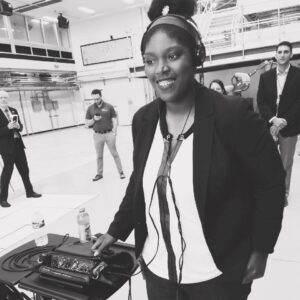 Podcast for the last 2 ½ years. Alexandria says there is no typical day at NASA.
Podcast for the last 2 ½ years. Alexandria says there is no typical day at NASA.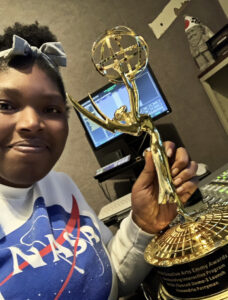 challenging because it was the first time we ever merged our NASA shows with SpaceX. Learning how to coordinate a show between multiple locations and have it flow easily was definitely difficult. The audio setup was new and extremely complicated but as a team, we managed to put out great shows for that mission. It’s also the same mission I won my first Emmy for.
challenging because it was the first time we ever merged our NASA shows with SpaceX. Learning how to coordinate a show between multiple locations and have it flow easily was definitely difficult. The audio setup was new and extremely complicated but as a team, we managed to put out great shows for that mission. It’s also the same mission I won my first Emmy for.
